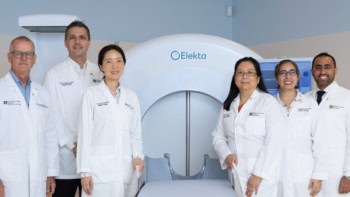
A study into bone loss in astronauts returning from long spaceflights has shown that some may have incomplete bone recovery even after one year back on Earth, with sustained losses equivalent to 10 years of normal age-related bone loss on Earth.
The multi-year TBone study began in 2015 and followed 17 astronauts before and after spaceflight to understand whether bone recovers after long periods in space. The research team used high-resolution (61 μm) peripheral quantitative CT to scan the tibia (shinbone) and radius (forearm) to assess bone strength, density and microarchitecture.
The results, published in Scientific Reports, show that weight-bearing distal tibia bones only partially recovered in most astronauts one year after spaceflight – suggesting permanent bone loss similar to about a decade’s worth of age-related bone loss on Earth. The research also found that some astronauts who flew on shorter missions, under six months in duration, recovered more bone strength and density in the lower body compared with those who flew for longer durations.
“Bone loss occurs because bones that would normally be weight-bearing on Earth, like your legs, don’t have to carry weight in microgravity. To understand what happens, our research team travelled to NASA’s Johnson Space Center near Houston, Texas, to scan the wrists and ankles of the astronauts before they left for space, on their return to Earth, and then at six and 12 months,” says principal investigator Steven Boyd, director of the McCaig Institute for Bone and Joint Health at the University of Calgary.
“The key objective of the research was to understand how well astronauts can regain bone within one year of returning to Earth,” Boyd adds. “Conducting research on astronauts is not only a fantastic opportunity to learn about their ability to recover bone, but also provides a basis for understanding how we all are able to adapt our bones.”
According to Boyd, the rapid rate of bone loss experienced by astronauts in microgravity is unparalleled by any bone loss scenario on Earth – meaning that it would take decades to study this magnitude of bone loss on our home planet. The short recovery time frames seen when returning to Earth after spaceflight also allows researchers to better understand the limits of human bone adaptation.
“Although recovery is incomplete, the rate of new bone being formed after spaceflight is greater than any known anti-osteoporosis treatment effect, so it provides an ‘upper limit’ on understanding the ability of bone to adapt,” explains Boyd.
Space for difference
Although bone loss and incomplete bone recovery has long been viewed as a problem for astronauts, Boyd reports that differences between the experiences of individuals can sometimes be quite striking.
“We’ve seen astronauts who had trouble walking due to weakness and lack of balance after returning from spaceflight, and others who cheerfully rode their bike on Johnson Space Center campus to meet us for a study visit. There is quite a variety of response among astronauts when they return to Earth,” he says.
To put the results in context, Boyd notes that astronauts typically travel to space for six months, and return with bone loss similar to what would happen over 20 years of ageing on Earth; they then recover about half (10 years) of that bone loss. Boyd also believes that, unless preventative measures improve, bone recovery will probably worsen as space missions get even longer than the current six-month standard spaceflight.
“This research is also relevant to non-astronauts who lose bone due to ageing or being immobilized for long periods of time with fractures, spinal cord injuries or bedrest,” he says.
Although further study is necessary, Boyd also points out that preventative measures, such as resistance-based exercises, modified diet and potentially even pharmaceuticals to minimize bone loss, may eventually be incorporated into spaceflight.

Blood tests reveal brain damage following long-term spaceflight
The next study in the works is TBone2, which will follow astronauts for up to two years after spaceflight to see if any additional bone recovery occurs beyond one year. TBone2 will also include astronauts on one-year space flights, enabling the researchers to compare bone loss between six-month and one-year missions.
“For future long-term missions, such as a trip to Mars, it will be important to understand whether the bone loss we measured after six months becomes even worse after a year or more, or if we start to see a stabilization of the skeleton,” says Boyd. “We hope the skeleton stabilizes so that somebody travelling to Mars doesn’t have too much bone loss, which would be difficult to recover upon return to Earth.”



